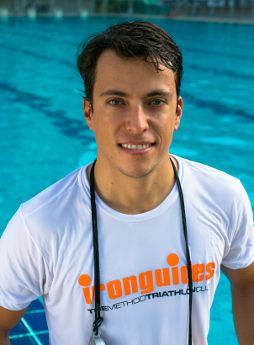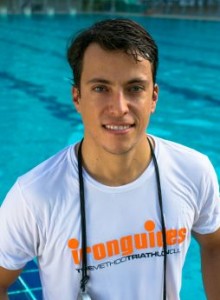Meet the Ironcouple: Rafal & Alicja Medak
By Vinnie Santana, ironguides Coach – Bangkok.
The Ironman World Championships, Kona, shifted our focus to the training and racing of our qualified athletes. Among them were ironcouple Rafal and Alicja Medak. These Kona qualifiers have an inspiring story, especially when it comes to combining a successful (and demanding!) professional career as investment bankers, with high-performance training and racing.
Age: 38 (Alicja), 40 (Rafal)
Weekly work hours: 50-60
Location: London, UK
Relationship: Married – no kids
Weekly training: 14-20 hours
Coach: Vinnie Santana
Qualifying Race: Ironman UK
Rafal: 9h53 — 3rd M40-44
Alicja: 10h45 – 3rd F35-39
Training overview (Coach’s comments):
I started working with the ironcouple back in November 2010. Rafal was already familiar with The Method and our approach as he had been an ironguides athlete a while ago. He started triathlon training in 2005, while Alicja back then was only supporting and taking pictures. Alicja decided to learn to swim the front crawl and entered her first race in 2007, coming last out of the water but gaining plenty of ground after a decent bike and run to finish in the middle of the pack.
Alicja is a very talented athlete. But since she is relatively new to the sport, she had no experience in setting up a race (and training) strategy to suit her strengths and give her a better chance to achieve her goal (Ironman Hawaii slot). Our first step was to determine what course suits her best and where she should be spending most of her efforts come race day.
Rafal, on the other hand, had the experience and background, but was never able to nail the back end of his Ironman marathon, falling short of securing an Ironman Hawaii slot in his previous attempts. So that part of the race became our focus for him.
As in any new coach-and-athlete relationship, it took us a while to develop a deeper understanding on what were their strengths and weaknesses. Another worry was to keep them both relatively fresh and rested since their day jobs can be extremely demanding and stressful, with some intercontinental business trips here and there.
The first race was early in May at Ironman 70.3 St Croix. It was a disaster when it came to results, but great feedback on race strategy—we knew we wouldn’t be using that one ever again! The athletes stuck to the original goal, never doubted the coach’s strategy, and continued on their quest to the perfect race.
Then things started to fall in place at Ironman 70.3 Honu in June. We found what seemed to be a better race strategy, then tweaked it a bit before a half Ironman race on July 4 in the UK: the result was great. Right there we had found the strategy to be used at Ironman UK. The instructions were clear, “Just repeat it!”. On race day at Ironman UK, they both did a great job of executing the plan and we knew Kona slots would be only a consequence on how stacked the field would be that day.
What it Takes
The ironcouple approach comes down to a “No Excuses” mindset in their training. The two examples below are often shared with our high-performance athletes as a reality check of “This is the kind of athlete you will be racing against.”
– Rafal was on a weekend bike ride, got into a crash with a car—nothing too serious but it involved enough bruises and blood to leave anyone scared. He also had a cracked bike to boot. Rafal got home and, determined to complete his training, finished his session on his spare bike on the wind trainer.
– When the couple went to Italy for a training weekend, their Sunday long ride didn’t leave enough time to do the run they were supposed to do. They packed their gear, headed to the airport, checked their bags—and finished the brick run, running around the airport car park.
When you approach your training with the determination and willpower as Rafal and Alicja, come race day you are relaxed because your confidence couldn’t be higher. The ironcouple knew they did their best, and that their results would be only a consequence of training. Importantly, placing is something we tend not to worry about since we have no control over which other athletes choose to race as well.
For more information about the ironcouple and training via The Method, send an email to ironguides:
info@ironguides.net
By Vinnie Santana






Recent Comments